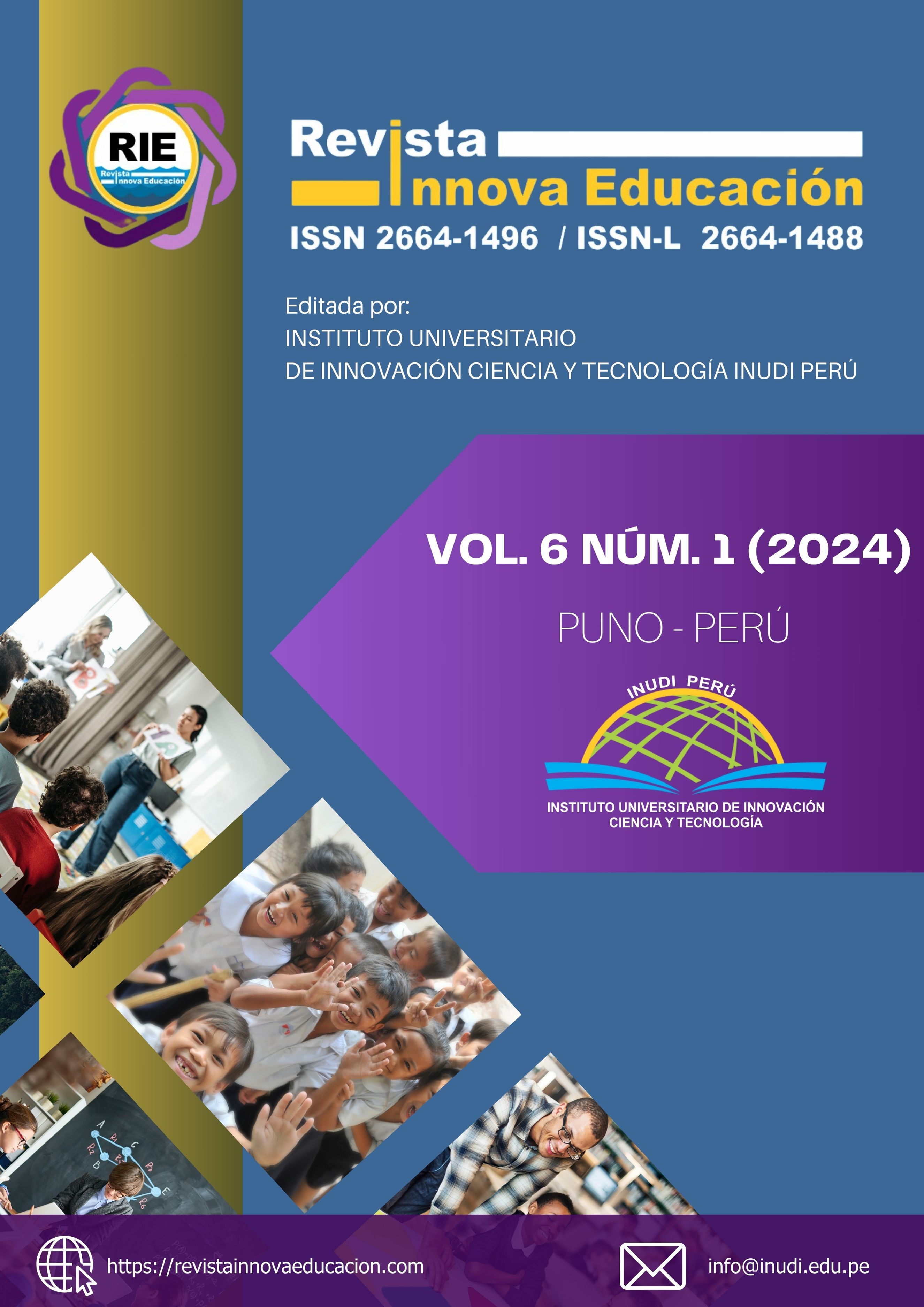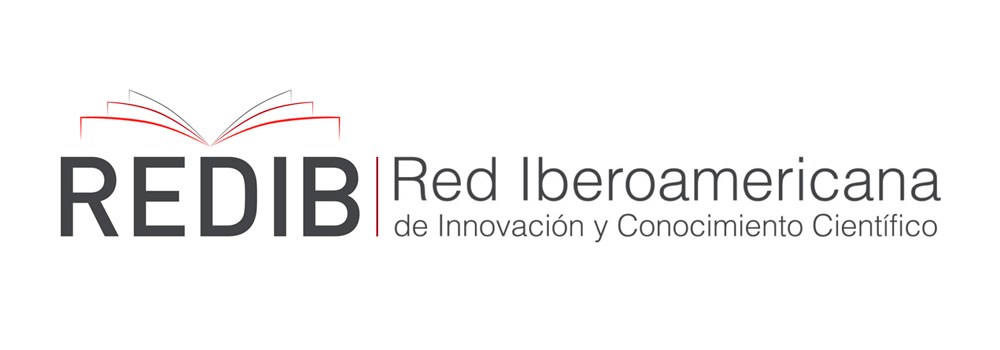Diseño de una intervención pedagógica hibrida en la promoción de un aprendizaje lingüístico e intercultural
DOI:
https://doi.org/10.35622/j.rie.2024.01.004Palabras clave:
AICLE, aprendizaje intercultural, clase de idiomas, ABP, intervención pedagógicaResumen
Este artículo de revisión aborda la necesidad de infundir el aprendizaje intercultural en el aula de idiomas. La literatura ofrece enfoques y métodos lingüísticos que pueden beneficiar potencialmente la enseñanza de lenguas extranjeras al transformar la práctica tradicional por una enseñanza más activa y participativa e intercultural. La enseñanza integral de una lengua extranjera/segunda requiere la inclusión del componente intercultural para dotar a los alumnos de la capacidad de interactuar en contextos cada vez más interculturales. Por ello, este trabajo propone un modelo para diseñar actividades lingüísticas e interculturales en el aula de idiomas. La metodología aplicada en este trabajo se basa en un enfoque cualitativo mediante la revisión de la literatura para recopilar ideas que faciliten un enfoque intercultural basado en una pedagogía híbrida que fusiona el Aprendizaje Integrado de Contenidos y Lenguas Extranjeras (AICLE) y el Aprendizaje basado en Proyectos (ABP), a favor de diseñar un modelo para implementar una experiencia lingüística intercultural centrada en los alumnos. Los resultados sugieren que los educadores de idiomas pueden proporcionar oportunidades de aprendizaje positivas para que los estudiantes desarrollen la competencia intercultural al planificar y mediar actividades lingüísticas interculturales en el aula de lengua extranjera/segunda lengua. Los estudiantes de idiomas pueden ampliar sus competencias y habilidades lingüísticas de forma más auténtica y significativa cuando la enseñanza está impregnada de elementos interculturales. El diseño descrito puede servir como modelo lingüístico-intercultural para enseñar y desarrollar la competencia comunicativa intercultural destinada a mejorar la comunicación entre culturas
Referencias
Arshavskaya, E. (2018). Promoting intercultural competence in diverse US classrooms through ethnographic interviews. Teaching Education, 29(2), 194–210. https://doi.org/10.1080/10476210.2017.1373277 DOI: https://doi.org/10.1080/10476210.2017.1373277
Auger, N. (2023). The Language Diamond: An Intercultural Model to Teach and Learn (through) Languages. Education Sciences 13(5), 1-32. https://doi.org/10.3390/educsci13050520 DOI: https://doi.org/10.3390/educsci13050520
Baker, W. (2011). Intercultural awareness: modelling an understanding of cultures in intercultural communication through English as a lingua franca. Language and Intercultural Communication, 11(3), 197-214. https://doi.org/10.1080/14708477.2011.577779 DOI: https://doi.org/10.1080/14708477.2011.577779
Barquero, W. (2022). Analisis de Prisma como Metodología para Revisión Sistemática: una Aproxi-mación General. Saúde Em Redes, 8, 339–360. https://doi.org/10.18310/2446-4813.2022v8n-sup1p339-360 DOI: https://doi.org/10.18310/2446-4813.2022v8nsup1p339-360
Bender, W. N. (2012). Project-based learning: Differentiating instruction for the 21st century. Corwin Press.
Bisquerra, A. R. (2003). Modelos de orientación e intervención psicopedagógica. CISS Praxis.
Black, P., & Wiliam, D. (2018). Classroom assessment and pedagogy. Assessment in Education: Principles, Policy & Practice, 25(6), 551-575. https://doi.org/10.1080/0969594X.2018.1441807 DOI: https://doi.org/10.1080/0969594X.2018.1441807
Borghetti, C. (2019). Interculturality as collaborative identity management in language education. Intercultural Communication Education, 2(1), 20–38. https://doi.org/10.29140/ice.v2n1.101 DOI: https://doi.org/10.29140/ice.v2n1.101
Busse, V., & Krause, U. (2016). Instructional methods and languages in class: A comparison of two teaching approaches and two teaching languages in the field of intercultural learning. Learning and Instruction, 42, 83-94. https://doi.org/10.1016/j.learninstruc.2016.01.006 DOI: https://doi.org/10.1016/j.learninstruc.2016.01.006
Byram, M. (2020). Revisiting Teaching and assessing intercultural communicative competence. Multilingual Matters. DOI: https://doi.org/10.21832/BYRAM0244
Byram, M., & Fleming, M. (2009). Perspectivas interculturales en el aprendizaje de idiomas. Edinumen.
Byram, M., Gribkova, B., & Starkey, H. (2002). Developing the Intercultural Dimension in Language Teaching: a practical introduction for teachers. Council of Europe.
Casoli-Uvsløkk, J., & Brevik, L. M. (2023). Intercultural approaches to second and foreign language instruction: A longitudinal video study. Teaching and Teacher Education, 134,1-14. https://doi.org/10.1016/j.tate.2023.104309 DOI: https://doi.org/10.1016/j.tate.2023.104309
Clouet, R. (2012). Studying the role of intercultural competence in language teaching in upper secondary education in the Canary Islands, Spain. Onomázein, 26, 309-334. https://www.redalyc.org/articulo.oa?id=134525391011 DOI: https://doi.org/10.7764/onomazein.26.11
Coyle, D., Hood, P., & Marsh, D. (2010). CLIL: Content and language integrated learning. Cambridge University Press. DOI: https://doi.org/10.1017/9781009024549
Crawford-Lange, L. M. (1982). Curricular alternatives for second language learning. In T. V. Higgs (Ed.), Curriculum competence, and the foreign language teacher (pp. 81-113). Skokie, IL: National Textbook Co. Reprinted in J. C. Richards and M. H. Long (Eds.), Readings in TESOL (pp. 120-144). Rowley, MA: Newbury House
Crookes, G. V., & Ziegler, N. (2021). Critical Language Pedagogy and Task-Based Language Teaching: Reciprocal Relationship and Mutual Benefit. Education Sciences, 11(6), 1-19. http://dx.doi.org/10.3390/educsci11060254 DOI: https://doi.org/10.3390/educsci11060254
Cubero, K. (2021). Theoretical Proposal: Exploring the symbiosis of CLIL and PBL to foster an intercultural learning experience in EFL. DEDICA revista de educação e humanidades, 19, 267-288. https://doi.org/10.30827/dreh.vi19.21829 DOI: https://doi.org/10.30827/dreh.vi19.21829
Cubero, K. (2022). El educador intercultural: el qué, cómo y porqué de la enseñanza de la competencia comunicativa intercultural en Latinoamérica. Revista Innova Educación, 4(2), 147-158. https://doi.org/10.35622/j.rie.2022.02.009 DOI: https://doi.org/10.35622/j.rie.2022.02.009
Cubero, K. (2023). Intercultural communicative competence through CLIL and PBL hybrid approach: a Costa Rican perspective. DEDiCA Revista De Educação E Humanidades (dreh), 21, 29–56. https://doi.org/10.30827/dreh.vi21.23757 DOI: https://doi.org/10.30827/dreh.vi21.23757
Cubero-Vásquez, K. (2022). Enhancing intercultural communicative competence through CLIL and PBL hybrid approach at tertiary education: A Costa Rican approximation [ Doctoral dissertation, Salamanca University]. Gredos USAL Repository database. https://gredos.usal.es/
Cubero-Vásquez, K. V. (2021). The Intercultural Speaker: transforming the language learning experience. Santiago, 156, 41–53. https://santiago.uo.edu.cu/index.php/stgo/article/view/5396
David, J. (2008). Project-based learning. Educational leadership: Journal of the Department of Supervision and Curriculum Development, 65(5), 80-82. https://files.eric.ed.gov/fulltext/ED581257.pdf
Dunlosky, J., Rawson, K. A., Marsh, E. J., Nathan, M. J., & Willingham, D. T. (2013). Improving Students’ Learning With Effective Learning Techniques: Promising Directions From Cognitive and Educational Psychology. Psychological Science in the Public Interest, 14(1), 4-58. https://doi.org/10.1177/1529100612453266 DOI: https://doi.org/10.1177/1529100612453266
Feddermann, M., Möller, J., & Baumert, J. (2021). Effects of CLIL on second language learning: Disentangling selection, preparation, and CLIL-effects. Learning and Instruction, 74, 1-12. https://doi.org/10.1016/j.learninstruc.2021.101459 DOI: https://doi.org/10.1016/j.learninstruc.2021.101459
Foss, M., & Liu, Y. (2020). Project-Based Learning (PBL) Center to Bridge Students with Technology. Intermountain Engineering, Technology and Computing (IETC), 1 (1), 1-5. https://doi.org/10.1109/IETC47856.2020.9249156 DOI: https://doi.org/10.1109/IETC47856.2020.9249156
Fried-Booth, D. L. (2002). Project work (2nd ed.). Oxford University Press.
Gómez-Parra, M. E. (2020). Measuring Intercultural Learning through CLIL. Journal of New Approaches in Educational Research, 9(1), 43-56. https://doi: 10.7821/naer.2020.1.457 DOI: https://doi.org/10.7821/naer.2020.1.457
Graham, V. C. (2021). Critical language pedagogy: an introduction to principles and values. ELT Journal, 75(3), 247–255. https://doi.org/10.1093/elt/ccab020 DOI: https://doi.org/10.1093/elt/ccab020
Gray, J. (2000). The ELT Coursebook as Cultural Artefact: how teachers censor and adapt. ELT Journal, 54(3), 274-283. https://doi.org/10.1093/elt/54.3.274 DOI: https://doi.org/10.1093/elt/54.3.274
Hanks, J. (2022). Integrating research into language teaching and learning: Learners and teachers as co-researchers exploring praxis. Language Teaching, 55(2), 217–232. https://doi:10.1017/S026144482100032X DOI: https://doi.org/10.1017/S026144482100032X
Herrera-Molina, J., & Portilla-Quintero, B. (2021). Critical Pedagogy Trends in English Language Teaching. Colombian Applied Linguistics Journal, 23(2), 155–165. https://doi.org/10.14483/22487085.16732 DOI: https://doi.org/10.14483/22487085.16732
Houghton, S. (2013). Managing stereotypes through experiential learning. In S. Houghton, Y. Furumura, M. Lebeko & S. Li (Eds.), Critical cultural awareness: Managing stereotypes through intercultural (language) education (pp. 158-179). Cambridge Scholars Publishing.
Kemaloglu-Er, E., & Sahin, M. T. (2022). Project-based learning in English language teaching at a rural school: A case study from Turkey. Novitas-Royal (Research on Youth and Language), 16(1), 34–55. https://eric.ed.gov/?id=EJ1343062
Kim, S., Raza, M., & Seidman, E. (2019). Improving 21st-century teaching skills: The key to effective 21st-century learners. Research in Comparative and International Education, 14(1), 99-117. https://doi.org/10.1177/1745499919829214 DOI: https://doi.org/10.1177/1745499919829214
Lange, D. L., & Paige, R. M. (2003). Introduction. In D. L. Lange, & R. M. Paige (Eds.), Culture as the Core: Perspectives on Culture in Second Language Learning (pp. ix-xvii). Information Age Publishing.
Lee, S., & Park, M. (2020). Reconceptualization of the context in language learning with a location-based AR app. Computer Assisted Language Learning, 33(8), 936-959. https://doi.org/10.1080/09588221.2019.1602545 DOI: https://doi.org/10.1080/09588221.2019.1602545
Leotta, P., & Dolidze,T. (2022). The Role of Needs Analysis in English for Academic Purposes in Higher Education. European Scientific Journal, ESJ, 18(5), 8-24. https://doi.org/10.19044/esj.2022.v18n5p8 DOI: https://doi.org/10.19044/esj.2022.v18n5p8
López-Rocha, S. (2016). Intercultural communicative competence: creating awareness and promoting skills in the language classroom. In C. Goria, O. Speicher, & S. Stollhans (Eds), Innovative language teaching and learning at university: enhancing participation and collaboration (pp. 105-111). Dublin: Research-publishing.net. http://dx.doi.org/10.14705/rpnet.2016.000411 DOI: https://doi.org/10.14705/rpnet.2016.000411
Marsh, D., Maljers, A., & Hartiala, A. K. (2001). Profiling European CLIL classrooms: Languages open doors. University of Jyväskylä.
Moher, D., Liberati, A., Tetzlaff, J., & Altman, D.G. (2010). Preferred Reporting Items for Systematic Reviews and Meta-Analyses: The PRISMA Statement. International Journal of Surgery, 8, 336-341. http://dx.doi.org/10.1016/j.ijsu.2010.02.007 DOI: https://doi.org/10.1016/j.ijsu.2010.02.007
Montano, M. de las N., & Álvarez, M.K. (2023). The educational and pedagogical intervention in scientific research. Community and Interculturality in Dialogue, 3 (70),1-6. https://doi.org/10.56294/cid202370 DOI: https://doi.org/10.56294/cid202370
Pinzón-Castañeda, R. J. (2014). English teaching through project-based learning method in rural area. Cuadernos De Lingui¬stica Hispánica, 23, 151-170. https://doi.org/10.19053/0121053X.2344 DOI: https://doi.org/10.19053/0121053X.2344
Porto, M. (2021). Intercultural citizenship in foreign language education: an opportunity to broaden CLIL’s theoretical outlook and pedagogy. International Journal of Bilingual Education and Bilingualism, 24(7), 927-947. https://doi.org/10.1080/13670050.2018.1526886 DOI: https://doi.org/10.1080/13670050.2018.1526886
Porto, M., Houghton, S. A., & Byram, M. (2018). Intercultural citizenship in the (foreign) language classroom. Language Teaching Research, 22(5), 484-498. https://doi.org/10.1177/1362168817718580 DOI: https://doi.org/10.1177/1362168817718580
Porto, M., López-Barrios, M., & Banegas, D. L. (2021). Research on English language teaching and learning in Argentina (2014–2018). Language Teaching, 54(3), 355–387. https://doi:10.1017/S0261444821000082 DOI: https://doi.org/10.1017/S0261444821000082
Reinius, H., Kaukinen, I., Korhonen, T., Juuti, K., & Hakkarainen, K. (2022). Teachers as transformative agents in changing school culture. Teaching and Teacher Education, 120, 103888. https://doi.org/10.1016/j.tate.2022.103888 DOI: https://doi.org/10.1016/j.tate.2022.103888
Rodríguez, L. M., & Gerke, A. E. (2022). Using Foreign Films to Foster Pre-service Teachers' Intercultural Awareness in an EFL Context. In S. García-Sánchez & R. Clouet (Eds.), Intercultural Communication and Ubiquitous Learning in Multimodal English Language Education (pp. 45-67). IGI Global. https://doi.org/10.4018/978-1-7998-8852-9.ch003 DOI: https://doi.org/10.4018/978-1-7998-8852-9.ch003
Rodríguez, L. M., & Puyal, M. B. (2012). Promoting intercultural competence through literature in CLIL contexts. Journal of the Spanish Association of Anglo-American Studies, 34(2), 105–124. https://dialnet.unirioja.es/servlet/articulo?codigo=6145362
Rodríguez, M. L. (1988) Orientación educativa. Ceas.
Sánchez-García, R., & Pavón-Vázquez, V. (2021). Students’ perceptions on the use of Project-Based Learning in CLIL: Learning outputs and psycho affective considerations. Latin American Journal of Content & Language Integrated Learning, 14(1), 69–98. https://doi. org/10.5294/laclil.2021.14.1.3 DOI: https://doi.org/10.5294/laclil.2021.14.1.3
Sánchez-Palacios, M. D. C. (2017). Combining CLIL and PBL to facilitate the learning of occupational hazards in the first year of a higher vocational education and training bilingual programme in business administration and finance [Master’s thesis]. Universidad La Rioja. https://reunir.unir.net/handle/123456789/6130
Savu, E. (2014). The ‘Intercultural’ Teacher – A New Response to the Teaching Career. Procedia - Social and Behavioral Sciences, 128, 111-116. https://doi.org/10.1016/j.sbspro.2014.03.127 DOI: https://doi.org/10.1016/j.sbspro.2014.03.127
Scarino, A. (2010). Assessing Intercultural Capability in Learning Languages: A Renewed Understanding of Language, Culture, Learning, and the Nature of Assessment. The Modern Language Journal, 94(2), 324–329. http://www.jstor.org/stable/40856136 DOI: https://doi.org/10.1111/j.1540-4781.2010.01026.x
Serrano, R., Llanes, À., & Tragant, E. (2011). Analyzing the effect of context of second language learning: Domestic intensive and semi-intensive courses vs. study abroad in Europe. System, 39(2), 133-143. https://doi.org/10.1016/j.system.2011.05.002 DOI: https://doi.org/10.1016/j.system.2011.05.002
Smakova, K., & Paulsrud, B. (2020). Intercultural Communicative Competence in English Language Teaching in Kazakhstan. Issues in Educational Research, 30, 691-708.https://www.iier.org.au/iier30/smakova.pdf
Soboleva, A. V., & Obdalova, O. A. (2014). The Methodology of Intercultural Competence Development on the Basis of a Cognitive Style-inclusive Approach. Procedia - Social and Behavioral Sciences, 154, 155-161. https://doi.org/10.1016/j.sbspro.2014.10.128 DOI: https://doi.org/10.1016/j.sbspro.2014.10.128
Stockwell, E. (2016). Using web-based exploratory tasks to develop intercultural competence in a homogeneous cultural environment. Innovations in Education and Teaching International, 53(6), 649–659. https://doi.org/10.1080/14703297.2015.1049642 DOI: https://doi.org/10.1080/14703297.2015.1049642
Thomas, J. W. (2000). A review of research on project-based learning. The Autodesk Foundation.
Toom, A., Pyhältö, K., Pietarinen, J., & Soini, T. (2021). Professional Agency for Learning as a Key for Developing Teachers’ Competencies? Education Sciences,11 (7), 1-10 https://doi.org/10.3390/educsci11070324 DOI: https://doi.org/10.3390/educsci11070324
Topolovčan, T., & Matijević, M. (2017). Critical thinking as a dimension of constructivist learning: some of the characteristics of students of lower secondary education in Croatia. CEPS journal, 7(3), 47–66. http://www.cepsj.si/pdfs/cepsj_7_3/pp_47-66.pdf DOI: https://doi.org/10.26529/cepsj.287
Vieluf, S., & Göbel, K. (2019). Making intercultural learning in EFL lessons interesting – The role of teaching processes and individual learning prerequisites and their interactions. Teaching and Teacher Education, 79, 1-16. https://doi.org/10.1016/j.tate.2018.11.019 DOI: https://doi.org/10.1016/j.tate.2018.11.019
West, R. (1994). Needs analysis in language teaching. Language Teaching, 27(1),1–19. https://doi:10.1017/S0261444800007527 DOI: https://doi.org/10.1017/S0261444800007527
Woods, P. J., & Copur-Gencturk, Y. (2024). Examining the role of student-centered versus teacher-centered pedagogical approaches to self-directed learning through teaching. Teaching and Teacher Education, 138, 104415. https://doi.org/10.1016/j.tate.2023.104415 DOI: https://doi.org/10.1016/j.tate.2023.104415
Yufrizal, H. (2021). The impact of project based-CLIL on students’ English proficiency. Journal of Education and Learning 15(1), 11-18. https://doi:10.11591/edulearn.v15i1.15692 DOI: https://doi.org/10.11591/edulearn.v15i1.15692
Zhang, X., & Zhou, M. (2019). Interventions to promote learners’ intercultural competence: A meta-analysis. International Journal of Intercultural Relations, 71, 31-47. https://doi.org/10.1016/j.ijintrel.2019.04.006 DOI: https://doi.org/10.1016/j.ijintrel.2019.04.006
Descargas
Publicado
Número
Sección
Licencia
Derechos de autor 2024 Karol Cubero (Autor/a)

Esta obra está bajo una licencia internacional Creative Commons Atribución 4.0.



























